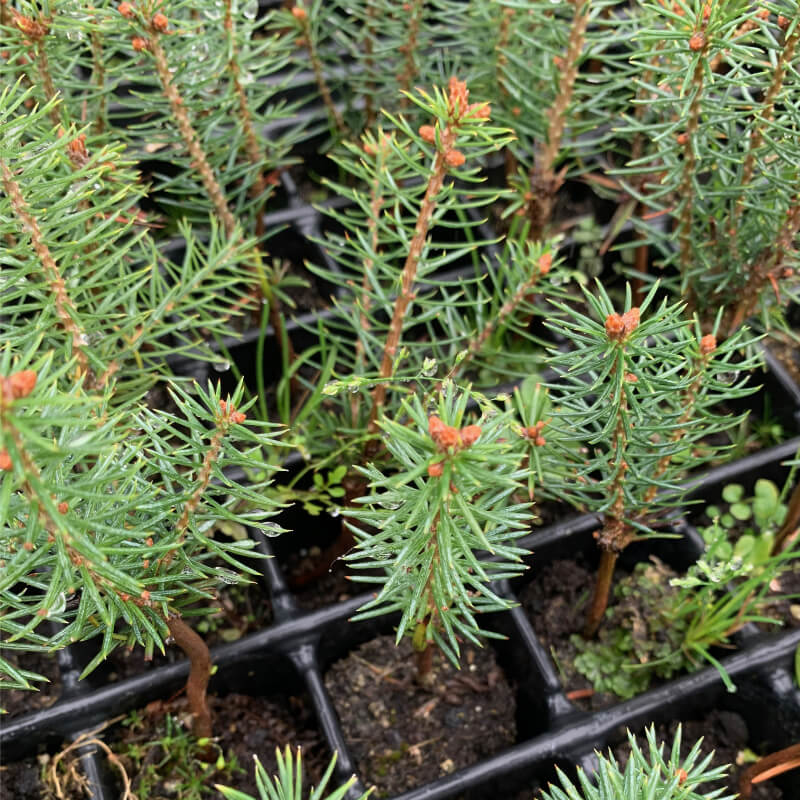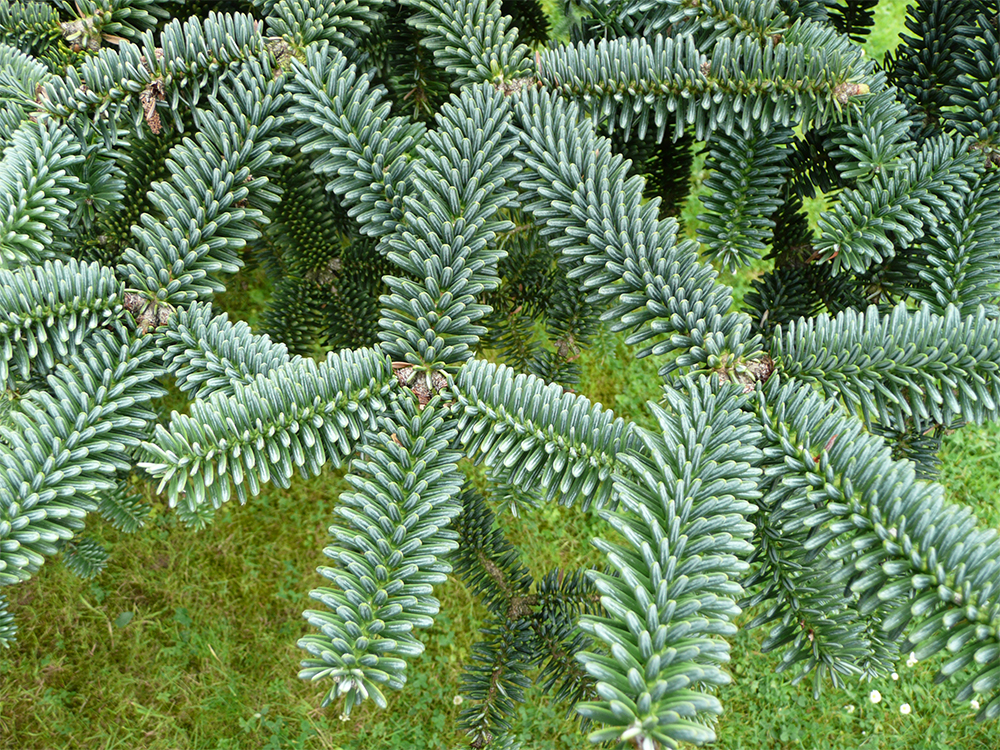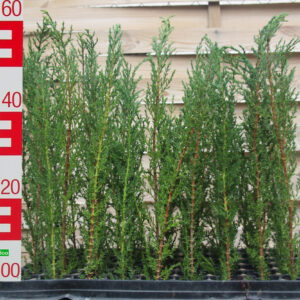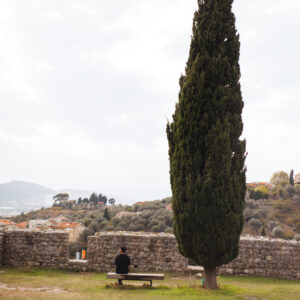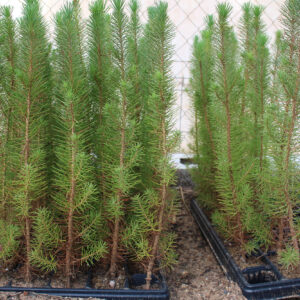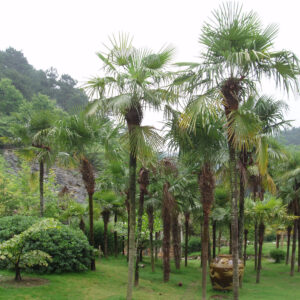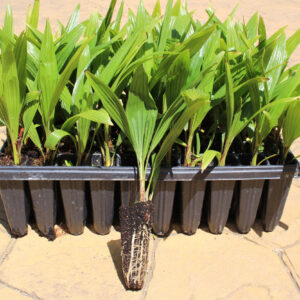Description
Abies pinsapo, commonly known as the Spanish fir, is a rare and striking conifer native to southern Spain and parts of northern Morocco. It is part of the Pinaceae family and belongs to the Abies genus, which includes true firs. With its symmetrical shape, dense needle clusters, and silvery-blue or green foliage, Abies pinsapo stands out both in the wild and in cultivated landscapes. Though relatively unknown outside botanical and horticultural circles, it’s a species of growing interest due to its ornamental value and conservation importance.
Botanical Profile
-
Scientific name: Abies pinsapo Boiss.
-
Common name: Spanish fir
-
Family: Pinaceae
-
Genus: Abies
-
Type: Evergreen coniferous tree
-
Lifespan: Long-lived (can exceed 100 years)
-
Native range: Southern Spain (Sierra de las Nieves, Sierra de Grazalema) and isolated parts of northern Morocco
-
Elevation range: 900 to 1,800 meters (2,950 to 5,900 feet)
Abies pinsapo typically grows at high elevations in mountainous Mediterranean regions, where cool, moist conditions in winter and dry summers prevail. Its natural habitat is limited to a few mountain ranges, making it one of the rarest European fir species in the wild.
Physical Characteristics
Size and Shape
In its natural environment, Abies pinsapo can grow up to 25–30 meters (80–100 feet) tall, though cultivated specimens in gardens are often smaller. It has a straight central trunk and a narrow, conical crown. Young trees are very symmetrical and dense, with branches arranged in regular whorls, giving them a formal, almost sculpted appearance.
Foliage
The most distinctive feature of Abies pinsapo is its needles. Unlike many firs whose needles lie flat, pinsapo needles radiate evenly around the stem in a bottlebrush formation. They are short, rigid, and pointed — typically 1 to 2 cm long — and range in color from dark green to bluish-green or silvery, depending on the subspecies and environmental conditions.
Cones
The Spanish fir produces upright, cylindrical cones that are 10–18 cm long. These cones sit on the upper branches and start out green or purple before turning brown and disintegrating to release seeds. The cones take two years to mature, and their appearance adds to the tree’s ornamental value.
Subspecies and Cultivars
There are a few notable variants:
-
Abies pinsapo var. pinsapo: The typical form found in Spain.
-
Abies pinsapo var. marocana: A rare Moroccan variety, sometimes considered a separate species (Abies marocana), with slightly different needle and cone characteristics.
-
‘Glauca’: A cultivated variety with especially blue or silvery foliage, prized in ornamental horticulture.
-
‘Aurea’: Features golden-tinged new growth.
These cultivated forms are popular in arboretums and botanical gardens due to their symmetry and color.
Habitat and Ecology
In the wild, Abies pinsapo is found in isolated high-elevation forests, often on north-facing slopes with limestone soils. It grows in mixed woodlands with other Mediterranean species, including oaks (Quercus spp.), junipers (Juniperus spp.), and pines (Pinus spp.).
It thrives in climates with cool, wet winters and hot, dry summers. Fog and occasional snowfall provide moisture during the dormant season, while deep roots help the tree withstand summer drought.
Cultivation
Although rare in nature, Abies pinsapo is cultivated in temperate regions across Europe and North America. It’s suitable for gardens and parks with enough space and cool, moist winters.
Climate Needs
It prefers Mediterranean or oceanic climates, ideally with moderate summer heat and good winter chill. It grows best in USDA hardiness zones 6 to 8. In hotter or drier climates, it may struggle without supplemental watering.
Soil Requirements
Spanish fir prefers well-drained, slightly acidic to neutral soils. It tolerates limestone but is sensitive to compacted or waterlogged soil.
Light and Exposure
It grows best in full sun to partial shade. In hotter climates, partial shade may help prevent needle scorch and reduce water stress.
Watering and Care
Young trees require consistent watering to establish roots. Once established, they tolerate dry conditions moderately well but benefit from deep watering during prolonged droughts.
Pests and Problems
Abies pinsapo is relatively pest-free but may suffer from root rot in poorly drained soils or from aphids and adelgids in some regions. Needle loss or browning can occur from heat stress or pollution.
Conservation Status
Abies pinsapo is listed as Endangered on the IUCN Red List due to habitat loss, climate change, and fire. Its natural range is extremely limited, and many populations are fragmented. Urban expansion, tourism, and changing land use have all contributed to habitat degradation.
However, efforts are underway to protect and restore the species. Protected areas in Spain, such as the Sierra de las Nieves Natural Park and Sierra de Grazalema, safeguard some of the last wild populations. Reforestation and seed conservation programs also support its survival.
Conservation strategies include:
-
Establishing seed banks
-
Fire prevention programs
-
Controlled reforestation with native genetic stock
-
Promotion of the species in cultivation to reduce wild harvesting
Uses and Cultural Significance
While Abies pinsapo has limited commercial timber use due to its rarity, it is valued as an ornamental tree in gardens, parks, and public landscapes. Its formal appearance and unusual needle arrangement make it a favorite in botanical collections.
In Spain, the tree holds cultural and ecological importance. It is a flagship species in conservation and a symbol of the unique biodiversity found in Andalusia’s mountain ecosystems. Several protected natural parks have been created in part to conserve the pinsapo forests.
Its historical use is minimal due to its limited distribution, but in modern horticulture, it serves as a specimen tree for collectors and conifer enthusiasts.
Final Thoughts
Abies pinsapo is a striking and uncommon fir species with both visual and ecological appeal. Its symmetrical form, distinctive needles, and resilience in tough climates make it an attractive option for gardens and parks in suitable zones. But its true importance lies in its rarity and the ecological niche it fills in southern Spain and northern Morocco.
As climate change and human pressures continue to threaten its native range, efforts to protect, restore, and propagate the Spanish fir are increasingly vital. Whether planted as a garden centerpiece or preserved in the wild, Abies pinsapo represents a unique blend of beauty, botanical interest, and conservation significance.
Scientific name: Abies Pinsapo
Common Name: Spanish Fir
Origin: Spain
Growth height: Up to 30 meters
Plant size: 10 – 60 cm
Age: 3 – 5 years
Delivery form: balled plants
Additional information
| Weight | 0,2 kg |
|---|---|
| Size | 10-20cm |

